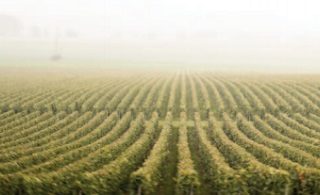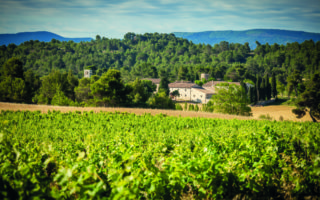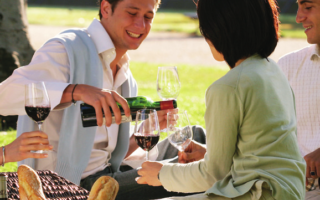Evaluating the Color of Wine

Color and Appearance
The most immediate aspect of the appearance of a wine is its color. Other features to note are clarity, fluidity and effervescence.
Color
Standard terms used to describe the most common shades for white wines are:
- Pale straw with green reflections: typical of very young wines
- Straw yellow: a common shade for wines with moderate bottle age
- (Pale) gold: characteristic of great wines in their mature state
- Amber Tawny: typical of OLD dessert or wines made from partially dried grapes. Also the unhealthy shade of oxidized wine.
To summarize, color in white wines deepens with age, tending toward full straw or pale gold. More mature dry wines, particularly if aged in wood, take on rich golden tones, sometimes with hints of copper or brass. Brown hues are a sign of oxidation, a defect in table wines, but a normal feature of certain fortified wines such as Marsala. Any hints of red in a white wine are usually indications of a fault.
Many of the standard terms for rosé wines are borrowed from French and Italian. They include:
- Rosé (Fr): the classic shade for wines made with short skin contact. Technically defined as wines with a maximum of 50 milligrams of anthocyanins per liter.
- Chiaretto (It): the pale shade of red obtained by slightly longer skin contact. The anthocyanins do not exceed 100 milligrams per liter.
Young wines from dark grapes vinified with little skin contact can also show hints of orange, coral or salmon. “Blush wines”, as they are sometimes described, fit into this category. Some rosé takes on tawny shades with age, though usually signs of browning mean the wine is oxidizing.
Terms used to describe the main colors in red wines are:
- Purple-red: the common shade for young, often immature wines
- Ruby: a more evolved but still youthful shade
- Garnet: the color word for classic wines at the peak of their maturity
- Brick red: paler shades associated with older but still healthy wine
Changes in shade are one of the features of the evolution and ageing of red wine. Mature, quality wines take on subtle gradations of depth and intensity of color, which are evaluated by tilting the glass as and noting the gradations in shade from the centre of the glass towards the edge. Pronounced yellow or brown colors at the rim indicate that the wine is past its prime, though some old red wines that show tawny or amber tones are still quite drinkable.
Clarity
- Brilliant: perfect transparency; the surface of the wine reflects the light
- Clear: normal state of clarity
- Dull: an unhealthy lack of luster
- Cloudy: with suspended particles visible to the naked eye
Commercial wine, whatever its category should be clear, perfectly transparent and free of deposits or suspended particles. Any sign of cloudiness indicates a defect. A fine wine of any color at its prime should be not only clear but also bright with a luminous quality.
Fluidity
Swirling the wine in the glass whether it has normal viscosity or is unusually heavy or thin. A dense wine – one that has a high alcohol or sugar content – will usually form more “legs” on the side of the glass than a light wine.
Effervescence
The test of effervescence applies mainly to sparkling wines (wines with 3.5 -6 atmospheres of pressure). It comprises the evaluation of the persistence of the mousse or froth which forms as the wine is poured and that of the perlage or bead, the bubbles which rise from the bottom of the glass. The perlage is also judged by the size of the bubbles. In the best quality wines bubbles are fine and continue to rise in a steady flow. If the bubbles cease quickly, if they are large and irregular, or seem to hang in suspension, the wine is probably either faulty or poor quality. Table wines with a light effervescence (up to 2 atmospheres of pressure) are sometimes described with a term derived from German, spritzy or perlant in French and crémant in Champagne.
Share to: Facebook Twitter LinkedIn Email
More in centre, champagne, wine
By FrenchEntrée
Leave a reply
Your email address will not be published. Required fields are marked *



